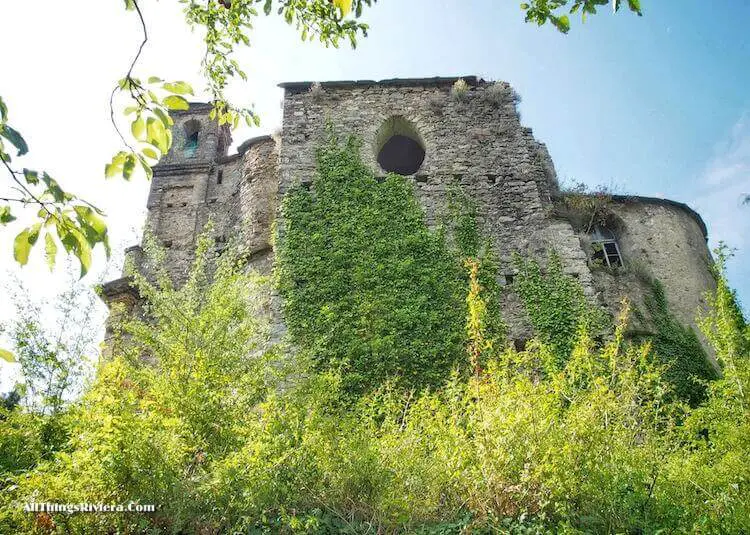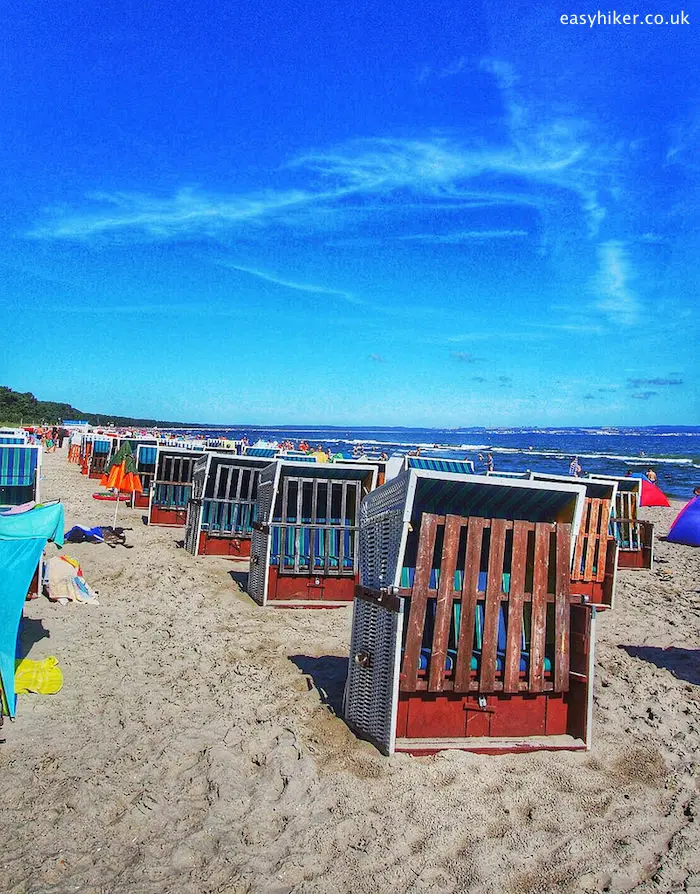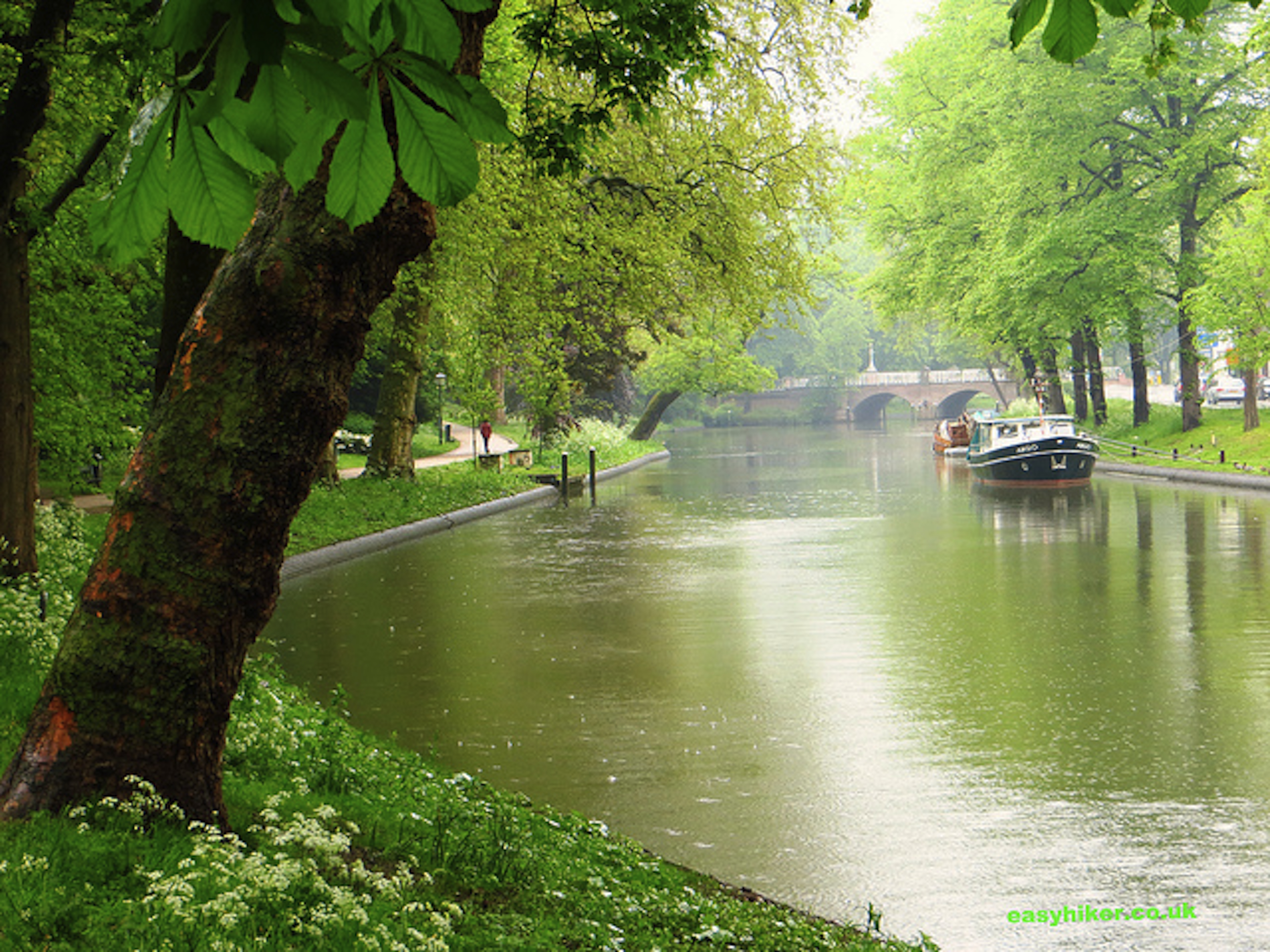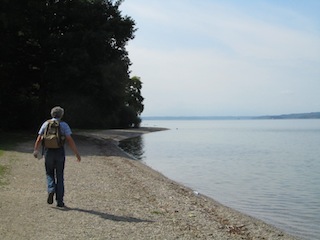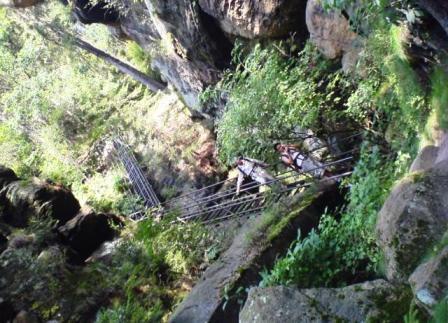Hiking in Germany
Where Witches Go Hiking
Trail
The Harzer Hexenstieg in North Germany, about 200 km (130 miles) west of Berlin, with a total length of 97 km (in 5 to 7 stages) from Osterode to Thale across what was once the most fiercely protected border in Europe.
Profile
The Harz is the wildest, most rugged and most untouched of the mountain ranges in northern and central Germany. This is partly a result of its geography and cold micro-climate. (The tree line in the Harz is at a mere 1100 metres, roughly half of what it is in the Alps. The Brocken – the highest peak of the Harz – is treeless even though it is only 1141 metres high). And partly as a result of recent German history.
From the end of WWII until the late 1980s, the Iron Curtain ran right through the middle of the Harz, and much of the borderland on the eastern side was entirely closed off to the East German population, either because it was used by the Soviet military or because of its sheer vicinity to the border. The Brocken was declared off limits on 13 August 1961, the day the Berlin Wall was erected.
So, when Germany was reunified in the early 1990s, the eastern half of the Harz – having been left untouched by human hands for several decades – had practically returned to its pristine state, sheltering animal and plant species that were to be found nowhere else in central Europe.
In one of its last official acts, the government of the GDR – two days before its dissolution – decided to protect this unique landscape by turning it into a National Park, and in 2006 this Park was merged with its slightly less rugged western counterpart to establish the “Nationalpark Harz” in its present form.
What we did
We walked about 12 km from Altenau at the very start of the National Park to Torfhaus from where you have a panoramic view of the Brocken. (Depending on the way in which the trail is divided, this stretch belongs to either stage 2 or stage 3.
What we liked
Apparently not content with offering the visitor (nearly) pristine forests and an authentic nature experience, the people who designed the Harzer Hexenstieg have also themed some of the hiking trail’s stages.
The stretch from Torfhaus to the Brocken, for example, is called the “Goethe trail” because Goethe, Germany’s favourite poet and playwright, is said to have walked this way some 200 years ago.
Okay, that may a bit fanciful, but there is also a “Precious Metal Mining” stage where trail-side information boards and stations fill you in with facts and little stories about mining in pre-industrial times, an important element of local history.
Our hiking stage had the “Water Regale” as its overall subject, the system of dams, rivers and reservoirs used to power the equipment of these mines. This was – as we found out to our own surprise – more interesting than it may sound.
The towns in the area are refreshingly different from the towns in other German regions. The normally ubiquitous brick is far less common here, and houses are generally made from slate and timber, which is used in the Harz quite generally for external cladding.
And since these wooden planks are often painted, in what would probably pass as “garish colours” by German standards, some of the small towns have a distinctly Canadian or New England sort of feel. Quaint, actually, and a totally unexpected bonus.
What we liked less
What is it that the Harz has with witches?
I am aware that witches are said to have congregated annually at the Brocken, but I find that scant justification for the overwhelming pervasiveness of figurines, dolls and more general knickknack. (They sit in front of bakeries, dangle from the ceiling of hairdressers’ boutiques, and every souvenir shop has about a million of them).
Or for the decision to call the trail the “witches trail” – which is what “Hexenstieg” means in English. I can’t help wondering: what kind of hiker did the local tourism board have in mind when they came up with idea – one who is twelve years old and has to be coaxed on a hiking trail with the promise of … well, what exactly? A crooked-nosed woman on a broomstick?
(Also, if I read the story correctly, witches took the high road on their way to the Brocken – the one through the air, remember? That’s why they do all this witchcraft stuff, after all – so they don’t have to schlep their brooms through the forest.)
On a more practical level, the trail – rugged and all that – passes through some thinly populated areas, and there are some really small places at the end of some of the stages.
Altenbrak (pop.: 374) and Königshütte (pop.: 600) do not sound like the kind of town where you would want to be stranded on a wet autumn night.
Towns to explore
Goslar – where we were based for our holiday – is lovely and well worth seeing. Wernigerode is also very pretty, and you can take the narrow gauge railway up the Brocken from there.
One warning, however: this is a private railway, and the fare is not included in any discounted offer such as the Laenderticket. It is not cheap (€ 28 round-trip per head, € 68 for a family of four) and time-consuming, too (roughly 2 hours each way).
The wider scene
Overseas visitors may want to combine a hike in the Harz with a trip to Berlin (3 hours by train from Goslar). Not exactly daytrip territory, but then again, the Harz is a little remote – that’s part of its charm, remember?
How to get there
For those who want to skip Berlin, Hanover is only an hour away from Goslar and – as the site of Germany’s foremost industrial fair – well connected to the country’s railway network. Hanover also has an airport with some international connections.
More information
The Nationalpark Harz has a website with some English-language content including a description of the “Goethe Trail”.
For more general information about the Hexenstieg, you can go to the English-language section of the Germany Tourism website.

